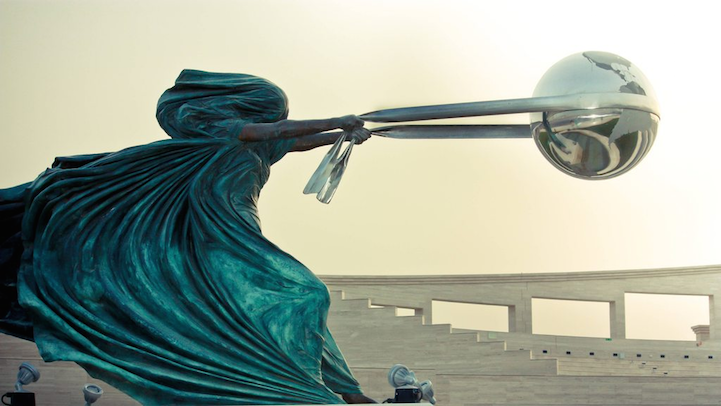“Let us not … flatter ourselves overmuch on account of our human victories over nature. For each such victory nature takes its revenge on us.” (Kunkel)

Benjamin Kunkel in his article ‘the Capitalocene’ anticipates that human beings have entered a new epoch – the capitalocene – denoted as the current period on Earth where industrial human activity has begun to have a significant negative impact on the planet’s ecology. We have established ourselves into being the most significant yet detrimental force fighting not alongside but against Mother Nature on the ecological battlefield because of our capitalistic nature that accompanies severe ecological repercussions. However, rather than generalising ‘human beings’ in this category, I believe ‘men’ have played a pivotal role in coercing the planet into an exploitative dimension since the mass industrialisation period which saw the introduction of capitalism.
Kunkel in his article sheds light onto the concept of eco marxism which deems capitalism to be the root cause of social injustice within the planet’s ecological crisis. As per Kunkel, “intellectual achievement of eco marxism was to adumbrate a holistic account of the way human beings simultaneously make natural history and their own social history; the political promise was to assert the ideal of a future society that would both abolish social class and preserve the environment”. (Kunkel) I would like to portray this concept through the lens of women of the working class as well as Mother Nature herself. Working class women are victims of mass exploitation within the capitalist system, and suffer a greater impact of this than upper class women, accentuating the division between the upper and working class. Additionally, the masculine/mechanical nature of the capitalocene predominantly being established by men, unsurprisingly deems women as the ‘weaker’ sex. The capitalism invoked gender division of labour within society obliges women to perform not only unpaid physical and emotional labour
at home, but also labour in the workplace which exploits them through menial wages.
The Force of Nature II art installation effectively illustrates Mother Nature’s struggle to safeguard the planet from this mass means of exploitation carried out by men and their mechanical nature against her and women in the collective society. The sculpture which can perhaps be portraying Mother Nature herself appears to be rapidly hurling the planet around in an attempt to maintain the Earth’s rotation and conditions. This can perhaps have a connection to the Marxist notion of unpaid labour women have to face in capitalist society. Although they are heavily exploited, their labour is a means of keeping society stable. Similarly, Mother Nature is exploited without receiving anything in exchange for her labour. She appears to be exerting all of her strength and vigour into saving the planet, but our extent of industrialization is deeming it difficult for her. The feminine nature of our ecosystems can be contrasted with the technological and masculine nature of capitalism. The fact that women are viewed as the inferior entity within society establishes the argument proposed by eco marxists and feminists that just like women, our ecosystems have also been vanquished within the capitalist society. Hence, even the universally deemed and accepted term ‘Mother Nature’, which on the surface espouses power, strength and life-giving force; actually reduces women and nature to a singular common denominator — a mother, pushing women and nature back into a solely reproductive and passive role. (Bari)
Sources:
Bari, Mavra. “Manipulating Mother Nature: The gendered antagonism of geoengineering |
Heinrich Böll Stiftung.” Heinrich-Böll-Stiftung, 30 January 2020,
https://www.boell.de/en/2020/01/30/manipulating-mother-nature-gendered-antagonism-
geoengineering. Accessed 30 September 2022.
Kunkel, Benjamin. “The Capitalocene.”